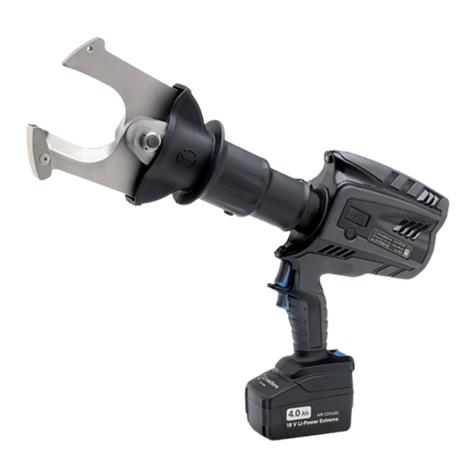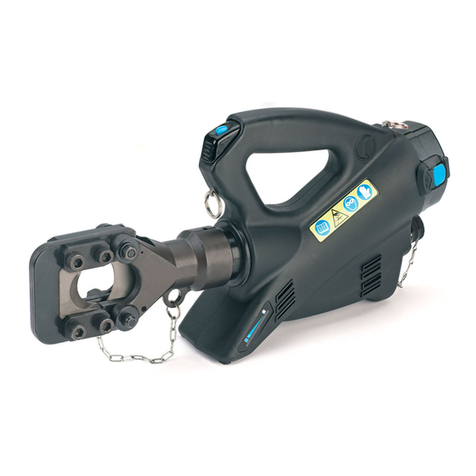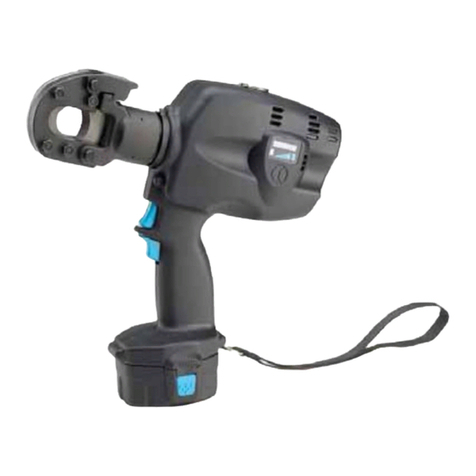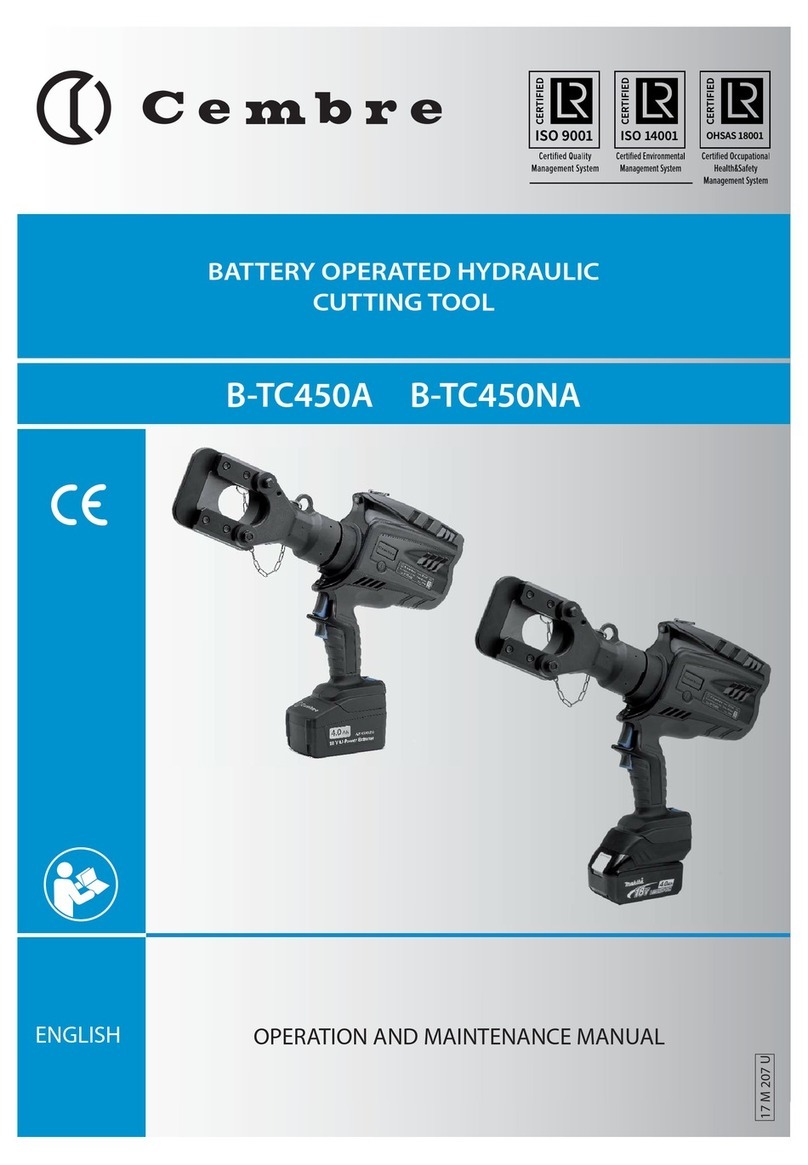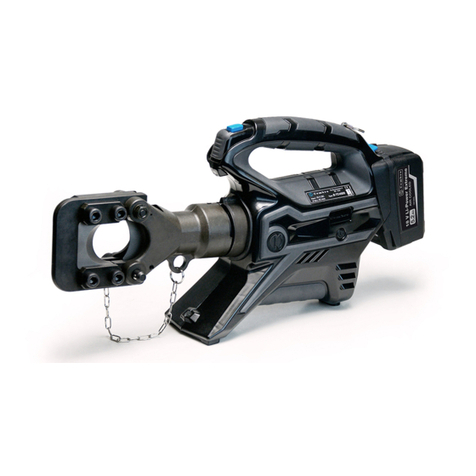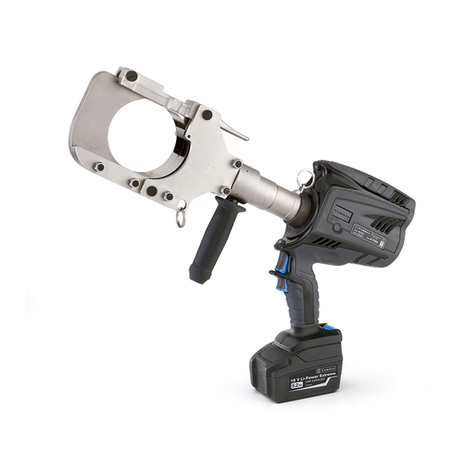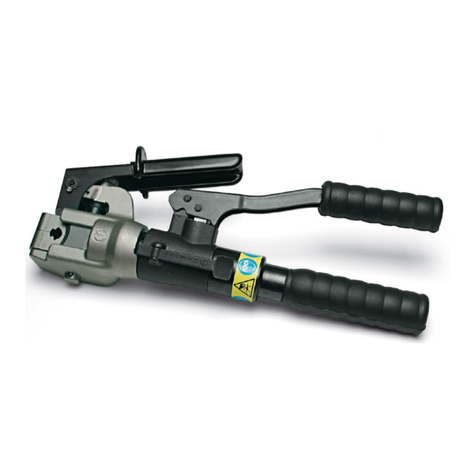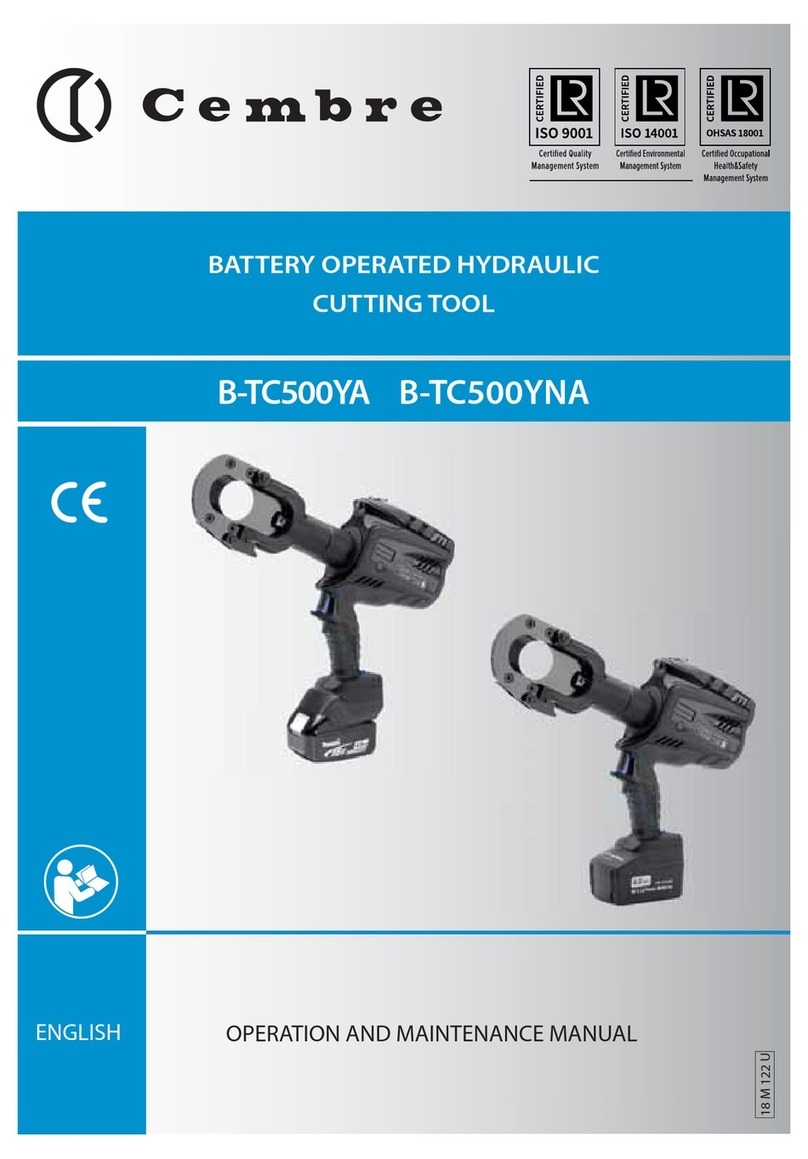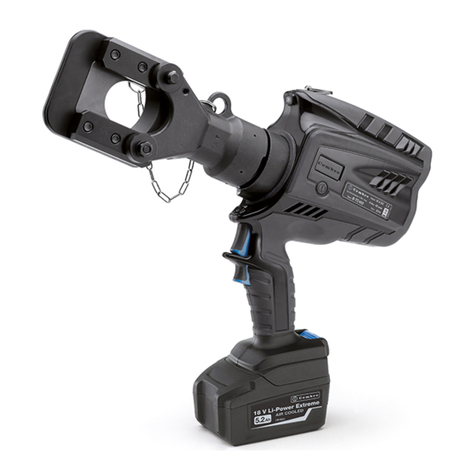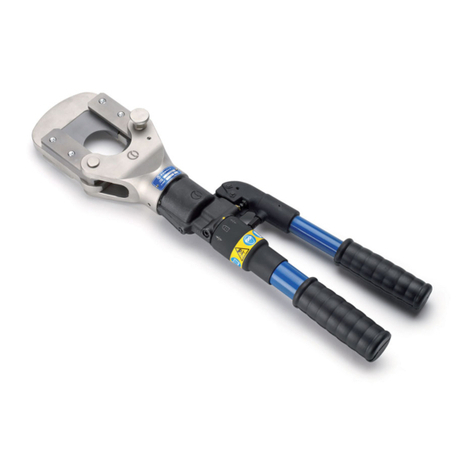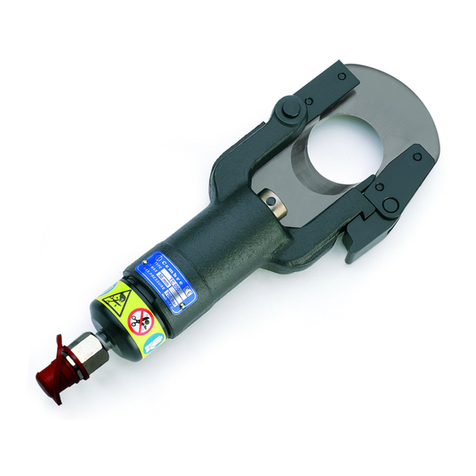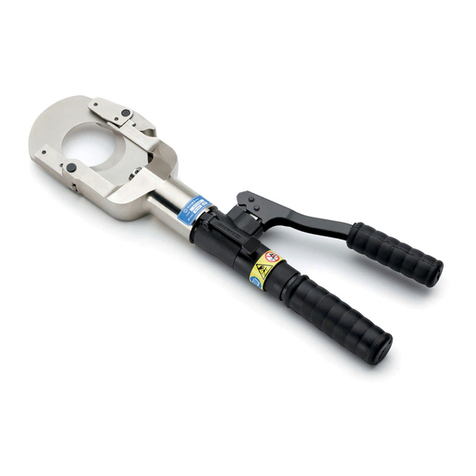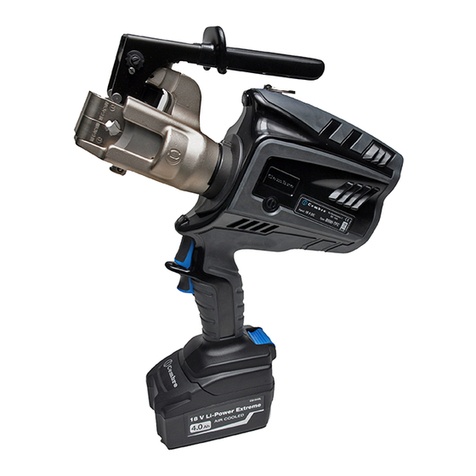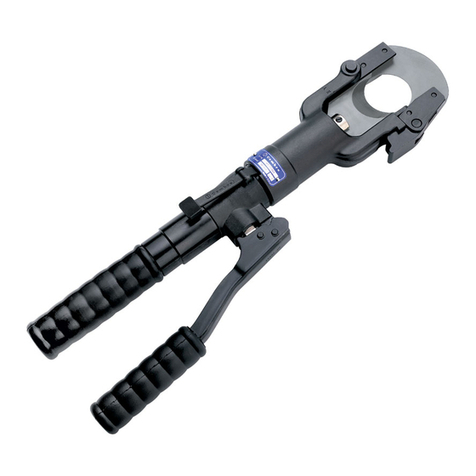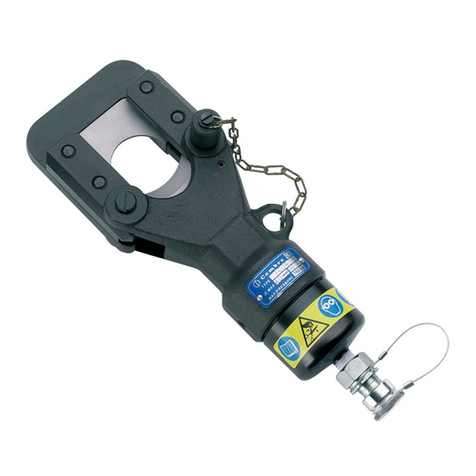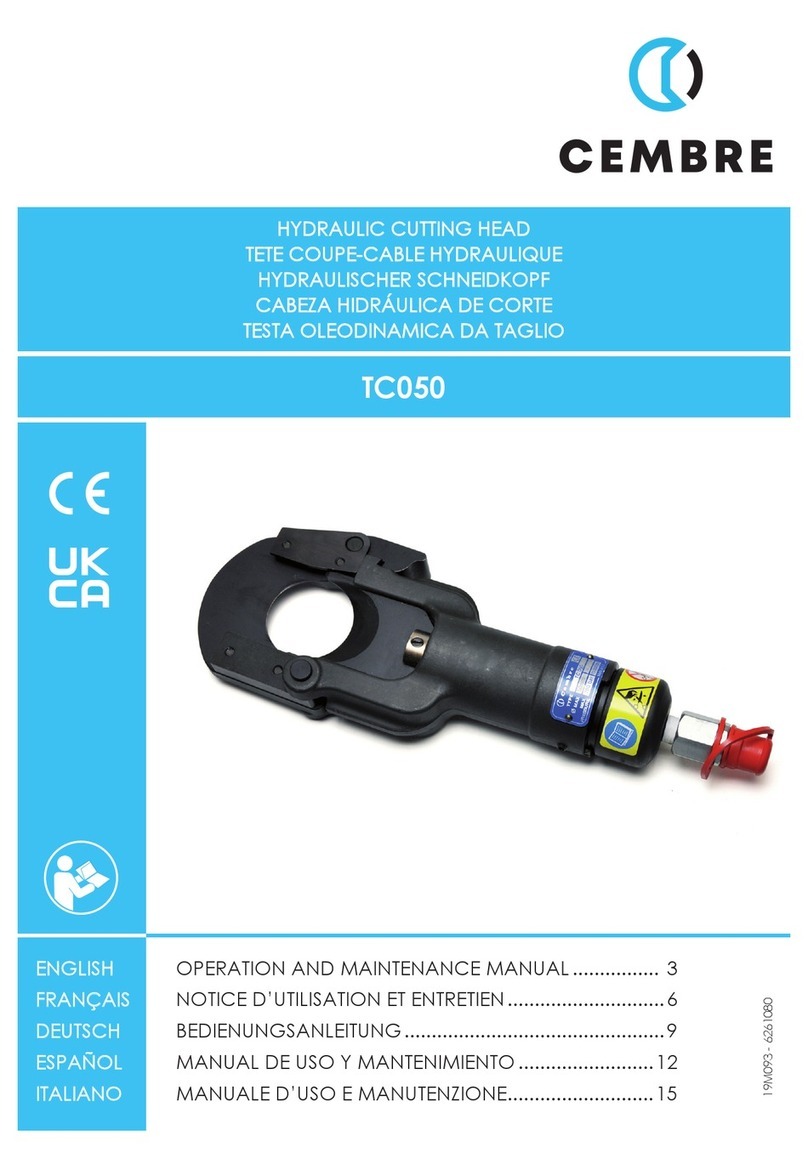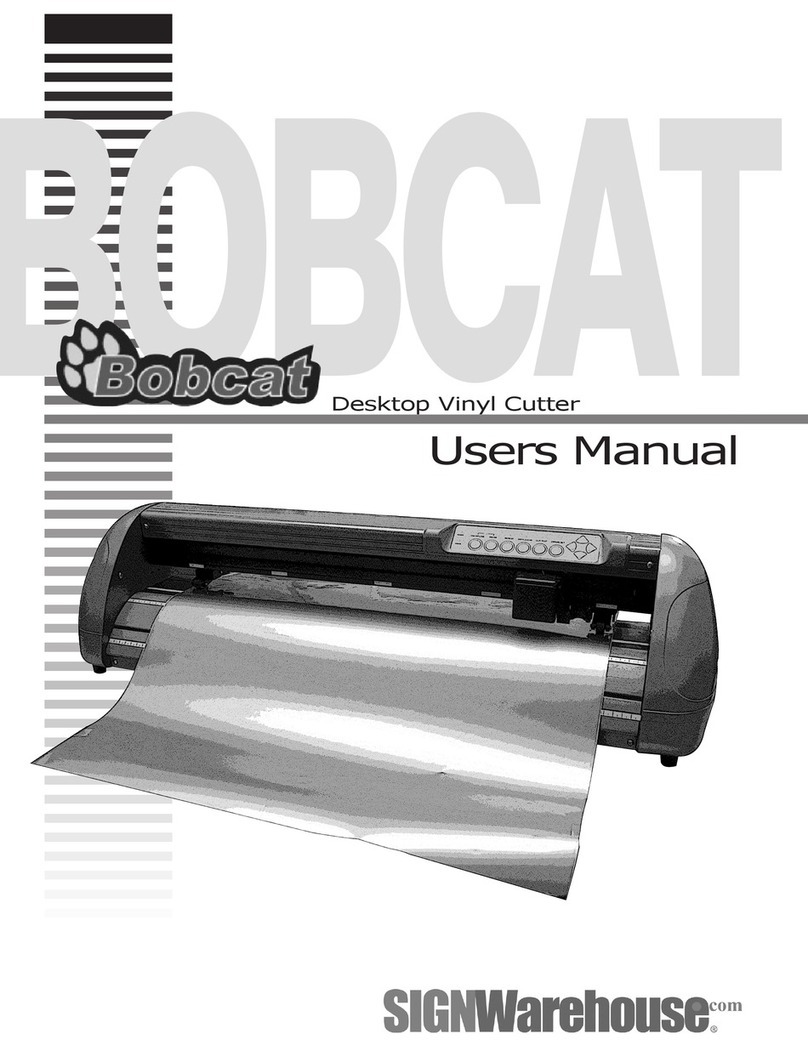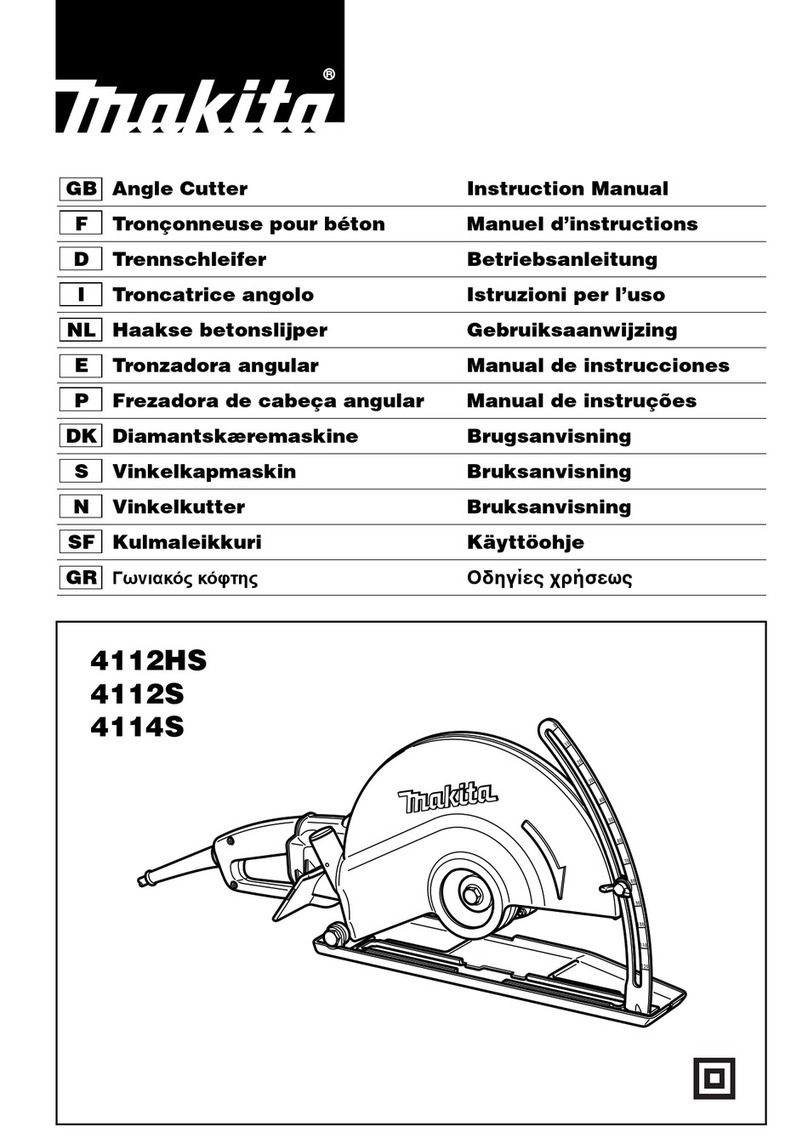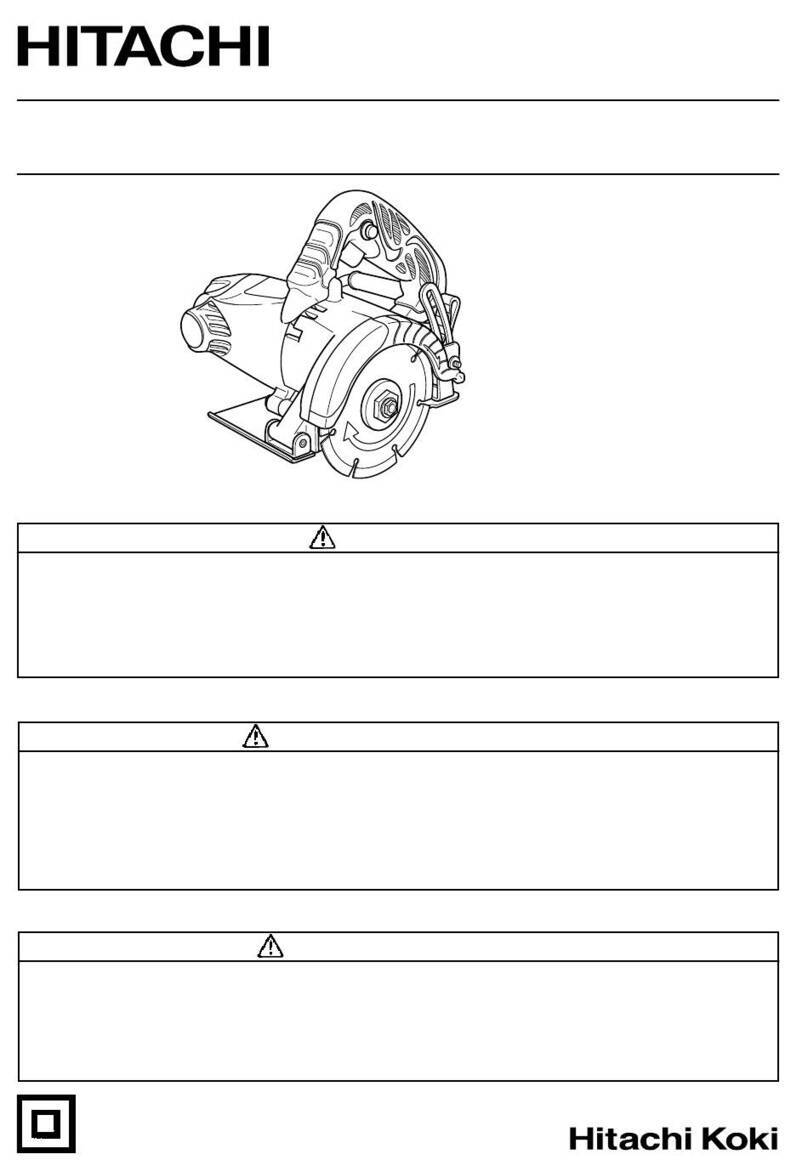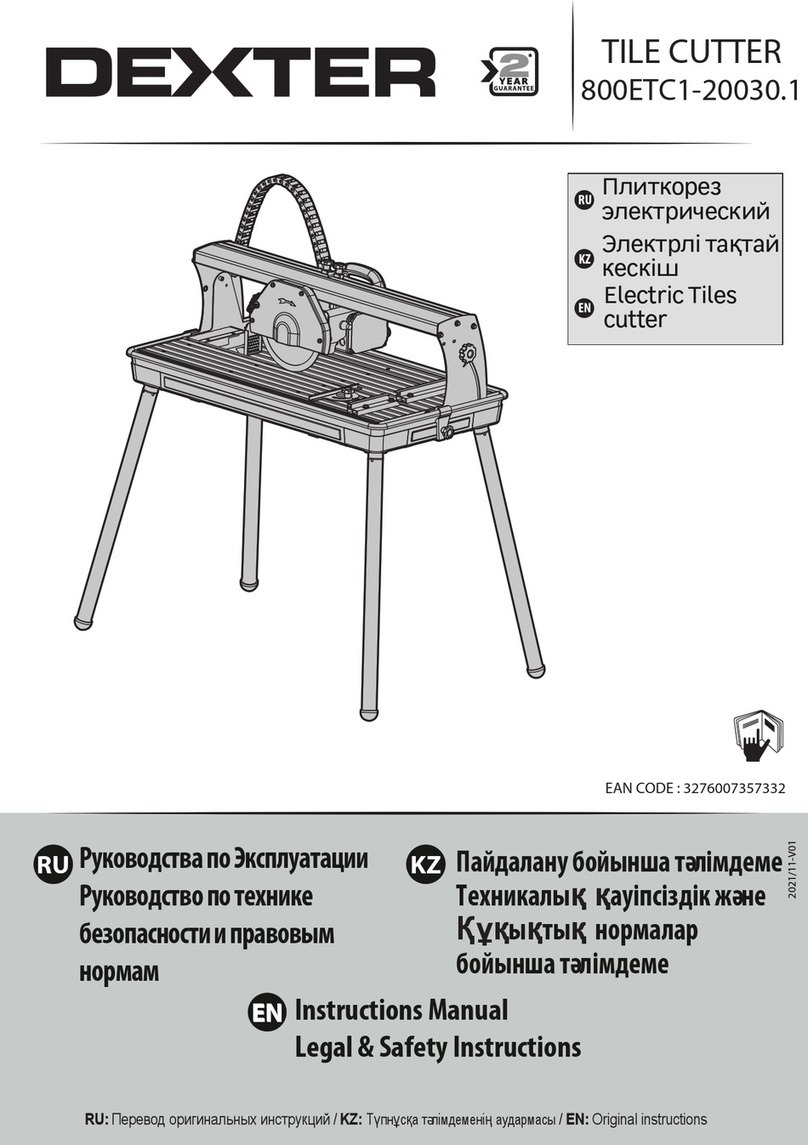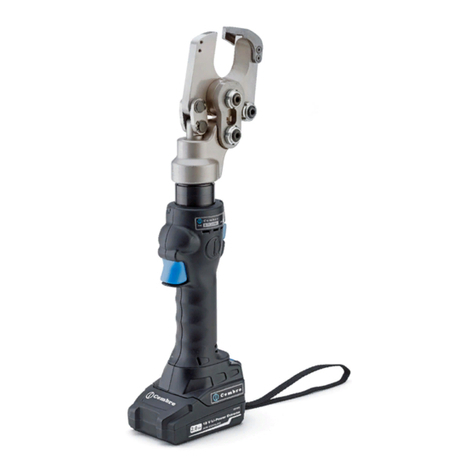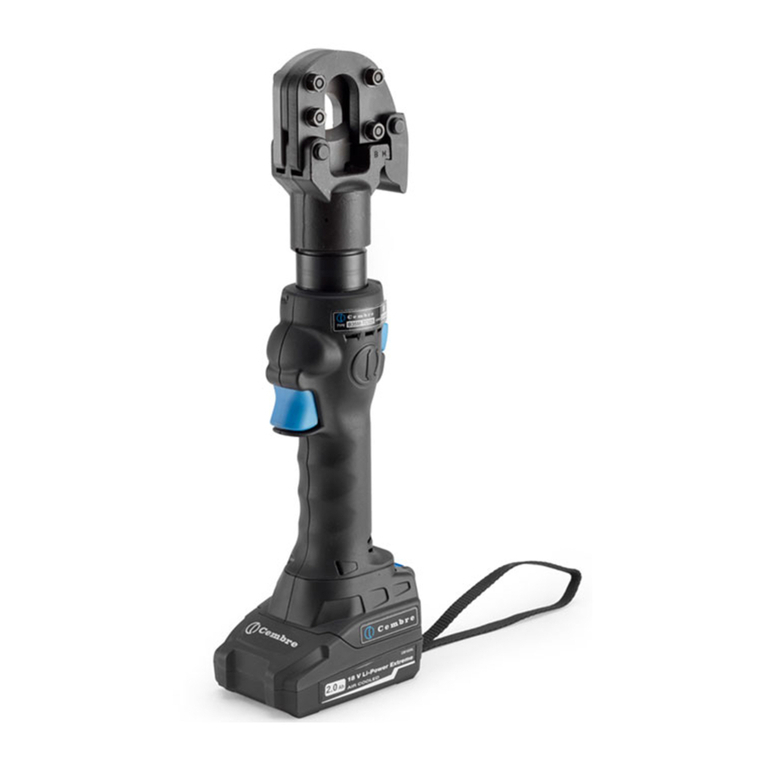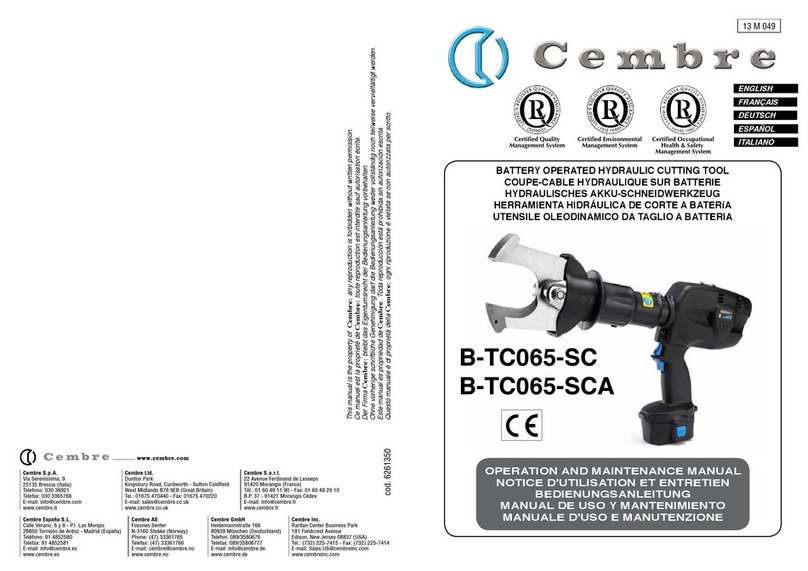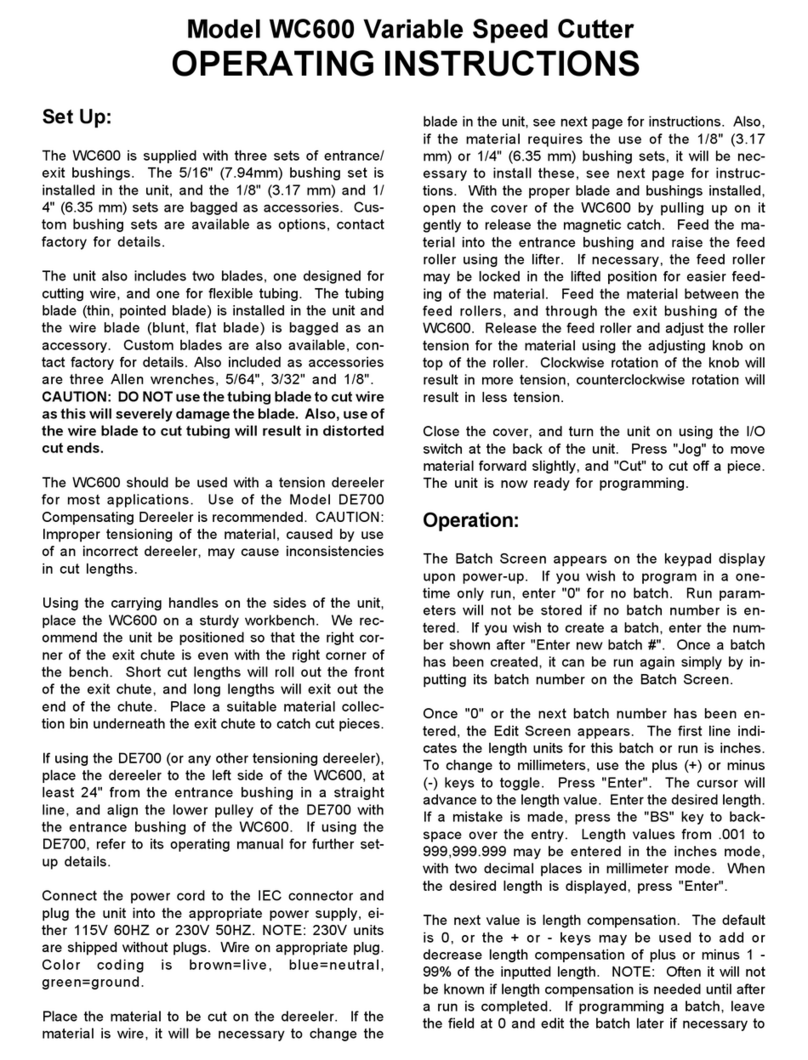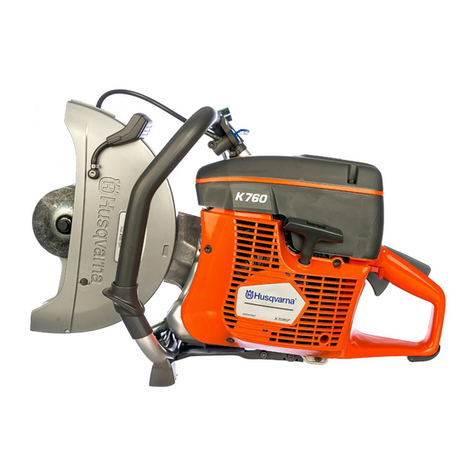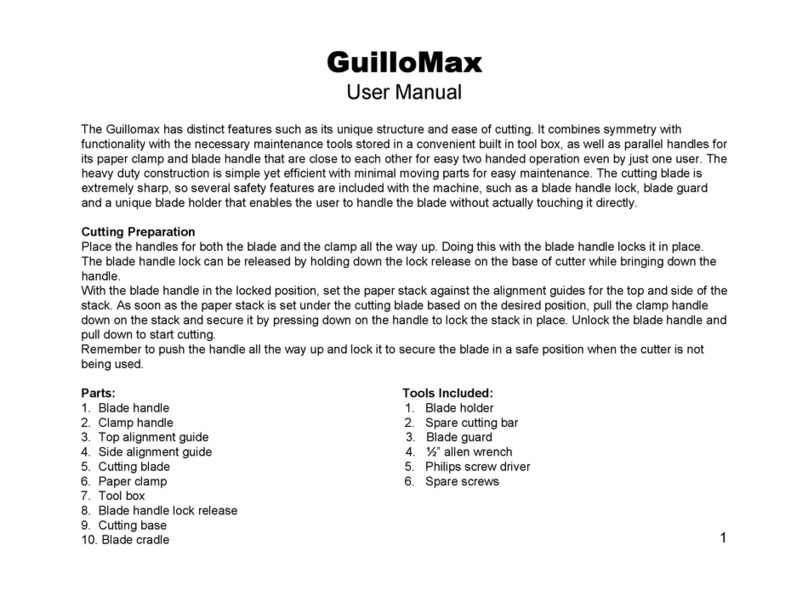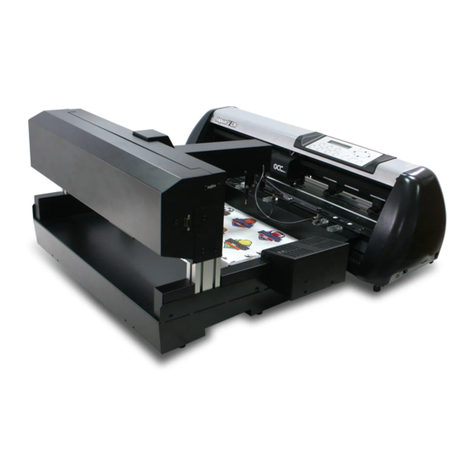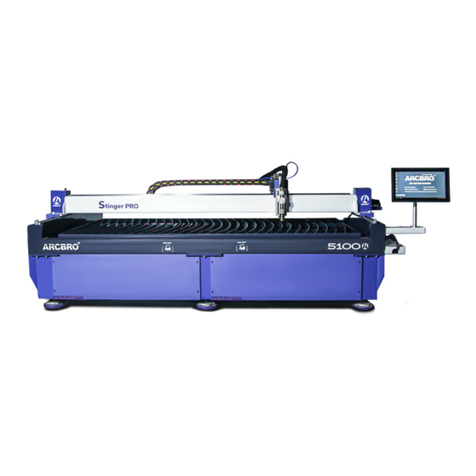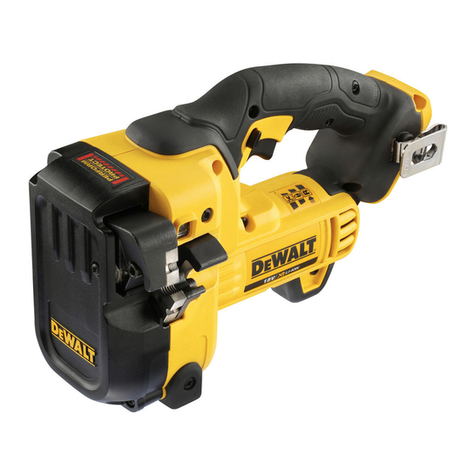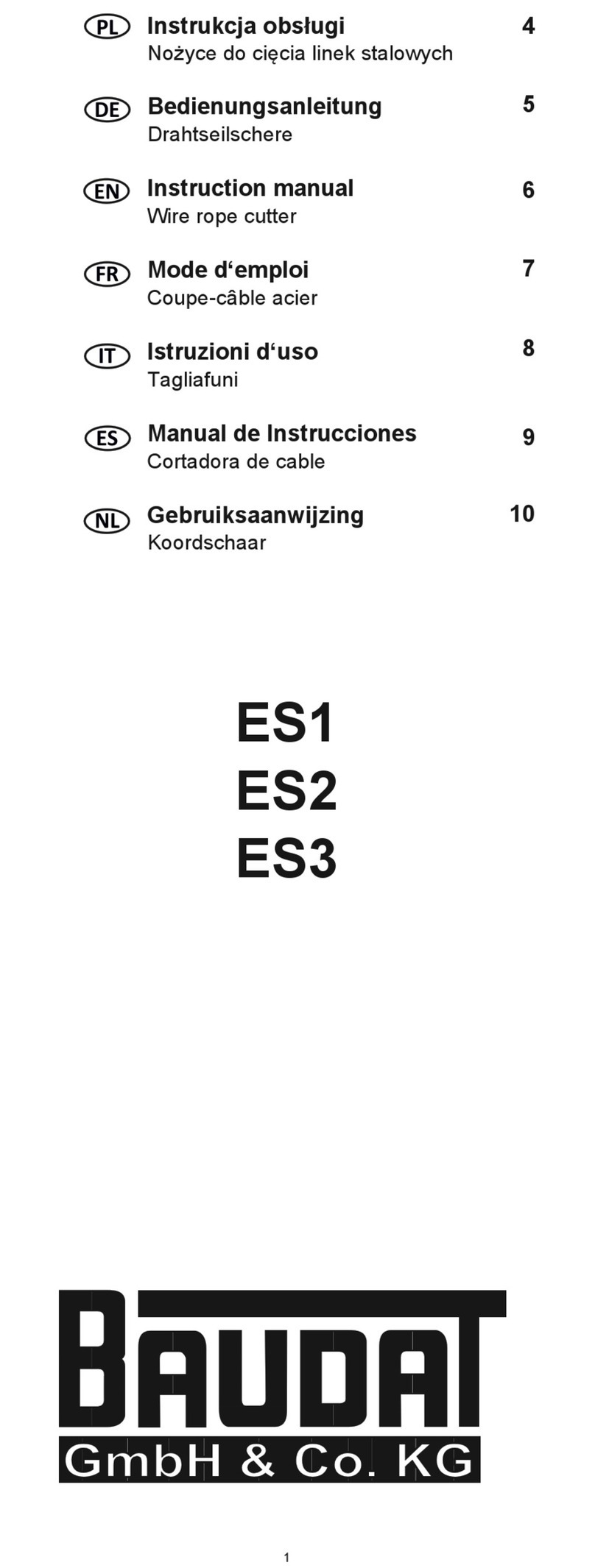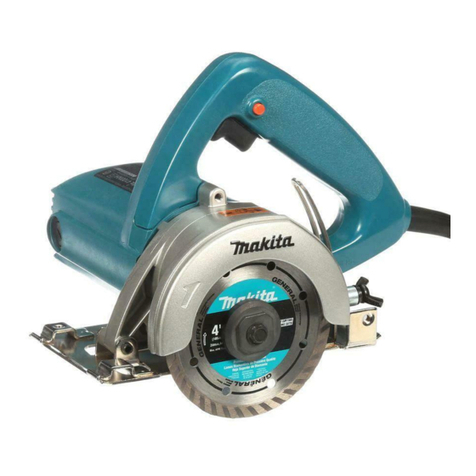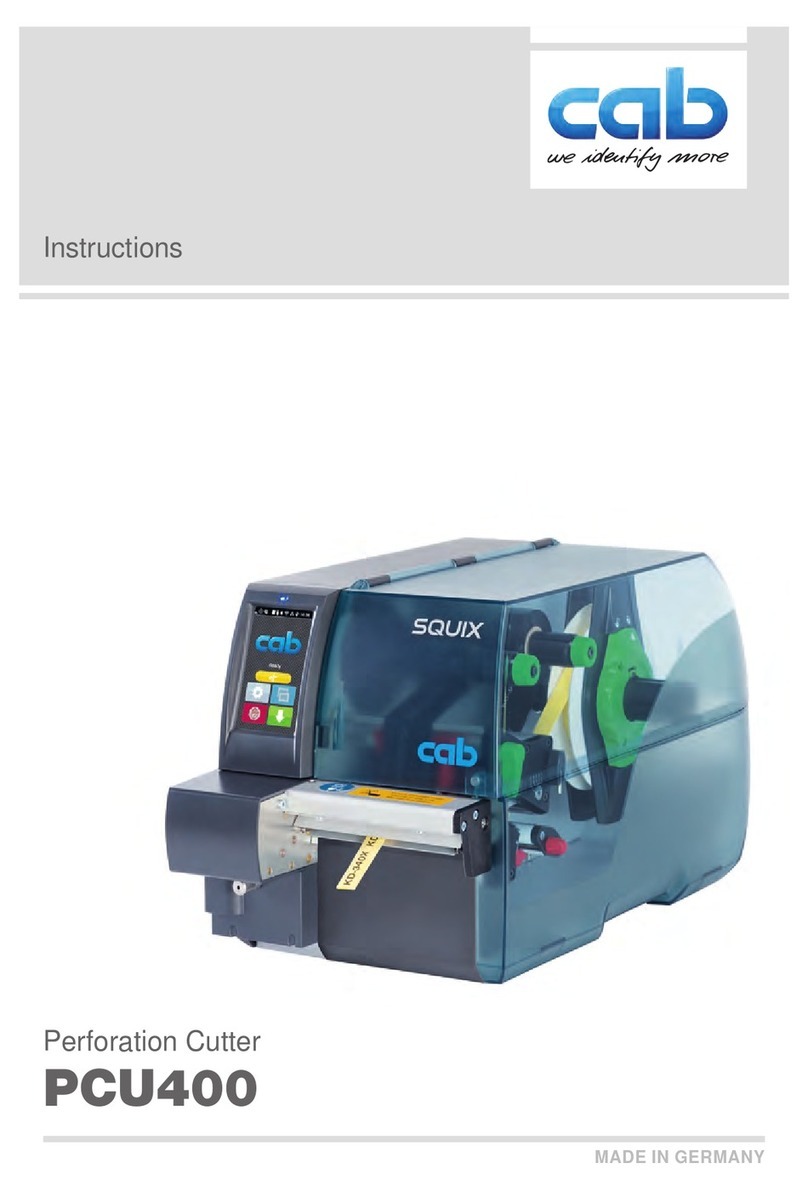
4
(
(
(
(
(
(
(
(
WARNING SYMBOLS - SYMBOLES D'AVERTISSEMENT - WARNSYMBOLE -
SÍMBOLOS DE ADVERTENCIA - SIMBOLI DI AVVERTENZA
Tool - Outil - Werkzeug - Herramienta - Utensile
– Before using the tool, carefully read the instructions in this manual.
– Avant d'utiliser cet outil, lire attentivement les instructions de cette notice.
– Vor Inbetriebnahme unbedingt die Bedienungsanleitung durchlesen.
– Antes de utilizar la herramienta, leer atentamente las instrucciones en este manual.
– Prima di utilizzare l'utensile, leggere attentamente le istruzioni riportate in questo manuale.
– Keep hands clear of cutting blades.
– Lors de la coupe tenir les mains éloignées des lames.
– Während des Schneidens nicht mit den Händen in den Gefahrenbereich gelangen.
– Durante el corte, tener las manos alejadas de las cuchillas.
– Durante il taglio, tenere le mani lontane dalle lame.
– Never throw batteries into re or water.
– Jamais jeter les batteries dans le feu ou dans l'eau.
– Werfen Sie Akkus nicht ins Feuer oder Wasser.
– Nunca tire las baterías al fuego o al agua.
– Mai gettare le batterie nel fuoco o in acqua.
– Always recycle the batteries.
– Recycler toujours les batteries.
– Verbrauchte Akkus stets dem Recycling zuführen.
– Reutilizar siempre las baterías.
– Riciclare sempre le batterie.
– Do not discard batteries into domestic refuse or waste disposal.
– Ne pas jeter de batteries dans une poubelle ou autre lieu non prévu à cet eet.
– Verbrauchte Akkus nicht der allgemeinen Abfallentsorgung zuführen.
– No tirar las baterías al cubo de basura o lugar parecido.
– Non buttate le batterie fuori uso nei cestini della spazzatura o luoghi simili.
– User information (Directives 2011/65/EU and 2012/19/EU), see page 9.
– Information pour les utilisateurs (Directives 2011/65/EU et 2012/19/EU) voir page 14.
– Information für den Benutzer (Richtlinien 2011/65/EU und 2012/19/EU) siehe Seite 19.
– Informe para los usuarios (Directivas 2011/65/EU y 2012/19/EU) vease página 24.
– Informazione agli utenti (Direttive 2011/65/EU e 2012/19/EU) vedere pagina 29.
Battery - Batterie - Akku - Batería - Batteria
– Do not cut Steel.
– Ne pas couper l'acier
– Keinen Stahl schneiden.
– No cortar acero.
– Non tagliare acciaio.
– Always wear safety glasses and gloves when operating this tool.
– Porter toujours les lunettes de protection et les gants de travail.
– Das Werkzeug immer mit Schutzbrille und Handschuhen betätigen.
– Trabajar siempre con las gafas y guantes de seguridad.
– Operare sempre con occhiali di protezione e guanti da lavoro.
